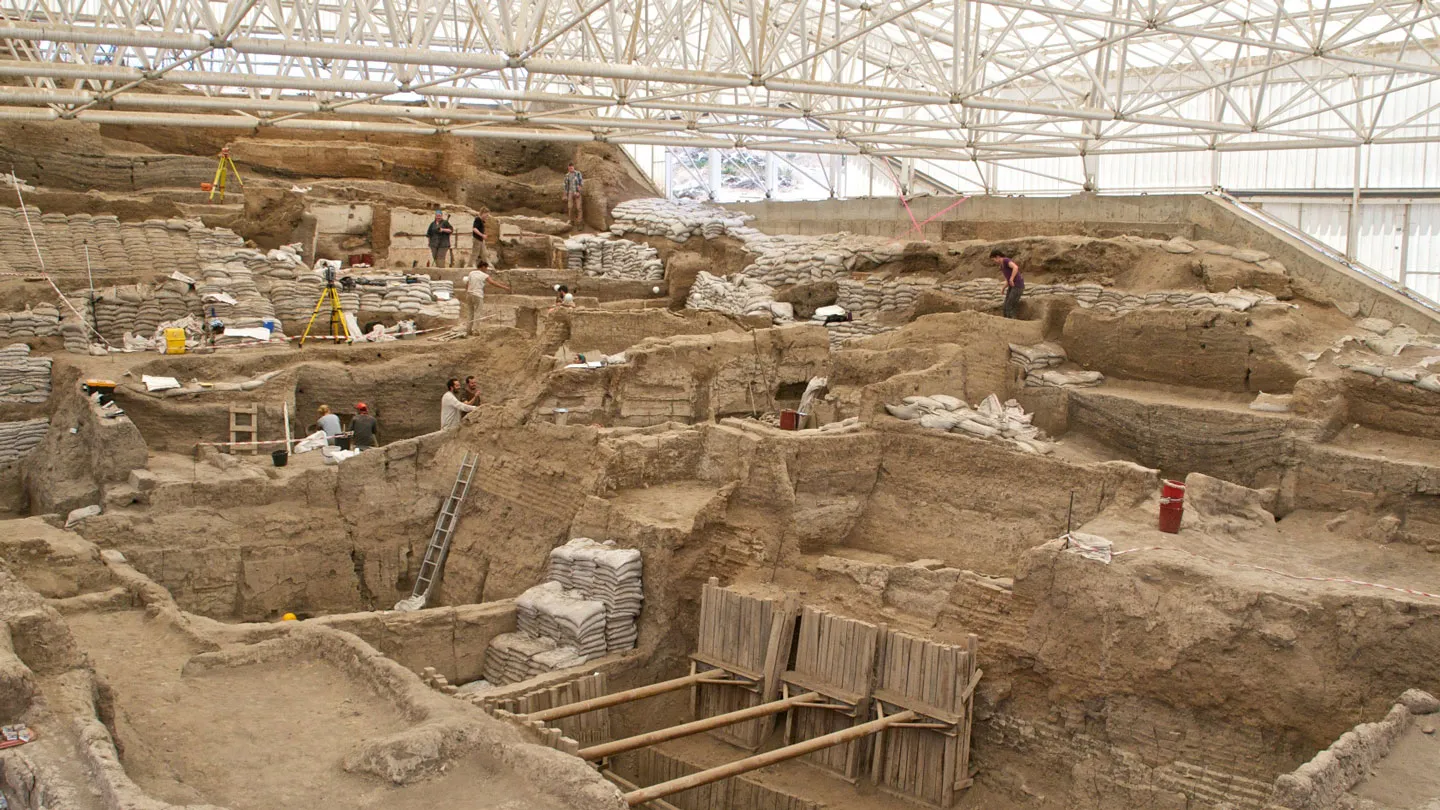By Bruce Bower
A farming-fueled baby boom long thought to have sparked the rise of ancient cities in southwest Asia turns out to have been a bust.
At a massive site in southern Turkey called Çatalhöyük, large numbers of multi-roomed, mud-brick structures cluster in several parts of a settlement that covers an area equivalent to nearly 26 U.S. football fields. Since its discovery in the 1960s, population estimates for the ancient settlement have ranged from 2,800 to 10,000.
If accurate, those numbers would support a decades-old idea that after around 10,000 years ago, early Neolithic villages experienced rapid growth and revolutionary social changes thanks to plant and animal domestication.
But an average of only 600 to 800 people lived at this farming and herding village during its heyday, around 8,600 years ago, two archaeologists conclude in the June Journal of Anthropological Archaeology. Children under age 5 represented roughly 30 percent of the population, say Ian Kuijt of the University of Notre Dame in Indiana and Arkadiusz Marciniak of Adam Mickiewicz University in Poznań, Poland.
Prior population estimates have typically, and mistakenly, assumed that Çatalhöyük buildings crowded closely together were constructed at the same time, with all dwellings simultaneously occupied over at least several generations, the researchers contend. In other words, a big archaeological site retaining remnants of lots of buildings must have housed a big crowd.
“That’s like assuming all airport hotels are always filled up and every airport hotel over the past 50 years coexisted,” Kuijt says. “Scholars have systematically inflated population levels of Near Eastern farming villages.”

Kuijt and Marciniak generated Çatalhöyük population estimates for different phases of its history, which lasted from around 9,100 to 7,950 years ago. Population totals for each phase varied depending on the percentage of the site presumed to have been covered by residential buildings and the number of years buildings were assumed to have been used as residences.
Drawing on prior radiocarbon dating and sediment studies at Çatalhöyük, as well as earlier studies of occupation patterns at modern farming villages in Turkey and nearby regions, the researchers generated what they consider a plausible population scenario for the ancient site at its pinnacle.
In their reconstruction, residential buildings covered 40 percent of the site, and people lived in 70 percent of all buildings. An average of five people inhabited each dwelling. Most residences were used for around one generation, between 20 and 45 years.
A peak number of only 600 to 800 Çatalhöyük inhabitants challenges a longstanding hypothesis that explosive population growth in early farming villages forced migrations to new areas, rapidly spreading a Neolithic way of life, Marciniak says. Farming villages instead spread gradually, in starts and stops, across southwest Asia and Europe, he suspects. Population booms and busts may have characterized agriculture’s spread (SN: 10/1/13).
A small population fits with previous evidence that Çatalhöyük residents relied on some form of collective decision making rather than a central political authority.
Kuijt and Marciniak’s analysis represents “a significant step forward” in reconstructing the population size of ancient villages, says ecological anthropologist Sean Downey of Ohio State University. But actual sizes of ancient populations are difficult to pin down, he cautions.
Other lines of evidence, such as an estimate of the number of adults at Çatalhöyük generated from ancient human DNA, would help to validate the new population estimate, Downey says.
Ongoing excavations indicate that most Neolithic villages featured small populations, in line with Kuijt and Marciniak’s Çatalhöyük estimate, says archaeologist Peter Akkermans of Leiden University in the Netherlands.
Akkermans has led excavations of Neolithic sites in Syria, which he estimates contained populations usually ranging from a few dozen to several hundred people. Small villages at each site were abandoned after around a generation of use and rebuilt nearby over hundreds, and sometimes thousands, of years. Those settlement cycles left behind large archaeological sites, some approaching the area covered by Çatalhöyük.
A transition from Neolithic villages to city-sized settlements in Asia and Europe took several thousand years, Akkermans says. Even then, urban life could range from densely packed communities to interconnected hamlets spread across the landscape (SN: 4/29/16).
This post was originally published at


Your point of view caught my eye and was very interesting. Thanks. I have a question for you.